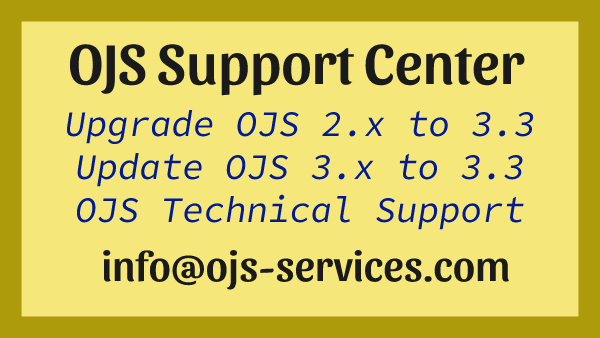What is OJS?
Open Journal Systems (OJS) is an open-source software designed for managing, publishing, and distributing academic journals online. It streamlines editorial workflows such as manuscript tracking, peer review, and publication, making it easier for journal editors to handle submissions. OJS is widely used by universities, research institutions, and independent publishers due to its user-friendly interface and flexible features.
The Current LTS Version: OJS 3.3
OJS 3.3 is the current Long-Term Support (LTS) version, offering a stable and reliable system for journal management. This version is optimized for performance, security, and user experience, with various plugin support and customizable themes. Many users continue to prefer OJS 3.3, as it has become one of the most trusted versions for running academic journals.
OJS 3.4: A Transition Version
OJS 3.4, released as a transition version, lays the groundwork for the upcoming OJS 3.5. While it introduces some notable enhancements and performance improvements, it is not considered a fully stable version yet. Many users and developers are opting to wait for the release of OJS 3.5, which promises to deliver a more polished experience. If you haven’t updated to OJS 3.4 yet, it might be worth waiting for 3.5 instead.
What to Expect in OJS 3.5?
OJS 3.5 is highly anticipated, as it is set to offer significant stability and new features. Here’s a preview of what you can expect in OJS 3.5:
- Improved Performance and Database Management: One of the primary enhancements in OJS 3.5 is optimized database management, especially for large journals. Performance issues, such as slow loading times and lag, will be addressed with more efficient queries, resulting in faster and more responsive operations.
- Enhanced Search Functionality: OJS 3.5 will include a more robust search function, making it easier to find articles and other content within the system. Search engine optimization (SEO) will also improve, ensuring better visibility of your journal’s articles on platforms like Google Scholar.
- New Features for Article and Content Management: New tools and features in OJS 3.5 will make article management easier for both editors and authors. These include improvements to the submission process, peer review workflows, and publication preparation, offering a more streamlined experience.
- Expanded Plugin Support and Compatibility: OJS 3.5 will support more plugins and see significant improvements in existing ones. The management and integration of plugins will become more seamless, allowing for better customization and functionality.
- A More User-Friendly Interface: With a cleaner, more intuitive user interface, OJS 3.5 will enhance the overall user experience for both editors and authors. The new interface will simplify navigation, making the system easier to use and reducing the learning curve.
OJS 3.5 is poised to continue being a powerful tool for academic publishing, with improvements in both usability and technical performance. If you’re currently using OJS, we recommend staying updated with the latest versions to take full advantage of these exciting new features.
As we look forward to OJS 3.5, it’s essential to be prepared for a smooth transition. If you’re currently using a version older than OJS 3.3, we strongly recommend updating to OJS 3.3 as soon as possible. OJS 3.3 offers significant improvements that make the eventual upgrade to OJS 3.5 much easier, while also addressing existing bugs and system issues. For assistance with OJS installation, upgrades, or OJS-compatible hosting, feel free to reach out to us for support.


Comments are closed